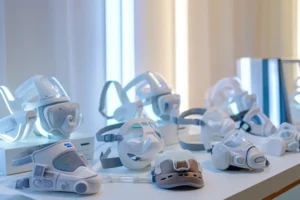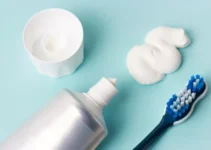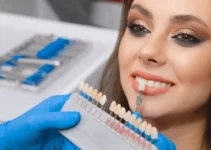Understanding the availability and types of CPAP masks through the NHS is crucial for those diagnosed with sleep apnea. The National Health Service provides various options that cater to individual needs and comfort preferences. This article explores how patients can access these devices, the different styles offered, and what criteria must be met to receive a CPAP machine and mask at no or low cost. Knowing these details can significantly ease the process of managing sleep apnea effectively with the right equipment.
Types of CPAP Masks Available on the NHS
When it comes to managing Obstructive Sleep Apnea (OSA), Continuous Positive Airway Pressure (CPAP) therapy is one of the most commonly recommended treatments. The National Health Service (NHS) in the UK offers several types of CPAP masks tailored to meet the unique needs of each patient. Choosing the right CPAP mask is crucial for effective treatment and compliance. Here, we will discuss the various types of CPAP masks available on the NHS, focusing on their features and suitability for different users.
CPAP masks generally fall into three primary categories: Nasal CPAP Masks, Full-Face CPAP Masks, and Nasal Pillow CPAP Masks. Each type offers distinct advantages and is designed to cater to the varying preferences and anatomical requirements of patients. Understanding the differences between these masks can help you and your healthcare provider make an informed decision.
Nasal CPAP Masks
Nasal CPAP masks cover the nose from the bridge to the upper lip and are secured with straps that go around the head. These masks are among the most commonly prescribed options for CPAP therapy. They deliver a steady stream of air through the nose to keep the airway open and are generally recommended for users who breathe through their nose during sleep.
One of the main advantages of nasal masks is that they are often more comfortable and less intrusive than full-face masks. This makes them a popular choice for those who find full-face masks cumbersome or claustrophobic. However, nasal masks may not be suitable for patients with nasal obstructions, severe allergies, or those who are prone to mouth breathing.
Research has shown that nasal CPAP masks can be highly effective in improving sleep quality and reducing daytime sleepiness in patients with OSA. However, the effectiveness can be compromised if the patient does not achieve a proper seal, leading to air leaks and reduced therapeutic benefits.
Full-Face CPAP Masks
Full-face CPAP masks cover both the nose and mouth, providing a direct air passage into the lungs. These masks are ideal for patients who breathe through their mouth, either due to preference or nasal congestion issues. Full-face masks are also recommended for patients with higher pressure settings, as they ensure a stable and consistent air delivery.
While full-face masks offer comprehensive coverage, they can sometimes be perceived as bulky and may take longer to get used to. However, advances in design and materials have made modern full-face masks much lighter and more comfortable than older models. They also come with adjustable straps and cushion sizes to fit a wide range of face shapes.
The effectiveness of full-face masks in treating OSA has been validated by numerous studies, showing significant improvements in sleep quality and reductions in apnea events. They are particularly beneficial for individuals with severe OSA who require higher levels of airway pressure to maintain open airways during sleep. It is essential for users to ensure a good fit to prevent air leaks and discomfort, which can otherwise lead to poor compliance and sub-optimal therapy outcomes. Regular cleaning and maintenance of the mask are also crucial to prolong its lifespan and ensure effective treatment.
Nasal Pillow CPAP Masks
Nasal pillow CPAP masks feature small, cushion-like inserts that rest at the entrance of the nostrils. These masks are secured with headgear and offer a minimalistic design, which many users find less obtrusive compared to other types of masks. Nasal pillow masks are especially suitable for those who feel claustrophobic with larger masks or have facial hair that interferes with obtaining a proper seal.
One of the primary benefits of nasal pillow masks is their lightweight and compact design, which allows for greater freedom of movement during sleep. This can be particularly advantageous for users who change sleeping positions frequently or prefer to sleep on their side. Moreover, the direct airflow into the nasal passages can sometimes result in more effective therapy.
However, nasal pillow masks may not be suitable for everyone. Users who experience frequent nasal congestion, allergies, or sensitivity at the nostrils may find this type of mask uncomfortable. Additionally, because of the direct airflow through the nostrils, there can be a higher risk of nasal dryness and irritation, although this can often be mitigated with the use of a heated humidifier.
Studies have indicated that nasal pillow masks can be just as effective as other types of CPAP masks in treating OSA, provided they are used consistently and correctly. The choice of mask often comes down to personal preference and the specific needs of the patient, which can be determined through consultation with a healthcare provider.
For further insights into CPAP therapy and other treatment options for OSA, be sure to check out our other articles that delve deeper into this vital subject.
How to Access CPAP Masks through the NHS
Continuous Positive Airway Pressure, or CPAP, is a highly effective treatment for obstructive sleep apnea (OSA). For those residing in the UK, the National Health Service (NHS) provides a way to access this essential healthcare equipment at minimal cost. Here’s a comprehensive guide on how to access CPAP masks through the NHS.
The process generally involves consulting a sleep specialist, obtaining a prescription, and securing the necessary equipment. Each of these steps is crucial to ensure you receive the most effective treatment for your specific needs.
Consulting a Sleep Specialist
Consulting a sleep specialist is the first and most critical step in accessing a CPAP mask through the NHS. Sleep specialists are medical professionals who are experts in diagnosing and treating sleep disorders, including OSA.
Typically, the journey begins with a referral from your General Practitioner (GP). Your GP will assess your symptoms, which may include chronic snoring, daytime fatigue, and episodes of stopped breathing during sleep. If your GP suspects OSA, they will refer you to a sleep specialist.
During your consultation with the sleep specialist, you will undergo a thorough evaluation. This may include a sleep study, either at home or in a sleep clinic, to monitor various physiological parameters during your sleep. Based on the results, the specialist will determine the severity of your OSA and recommend appropriate treatment options.
Consulting a sleep specialist ensures that your condition is accurately diagnosed and that you receive a personalized treatment plan. This is essential for effective management of OSA and for accessing the necessary CPAP equipment through the NHS.
Getting a CPAP Prescription
Once your sleep specialist has diagnosed you with OSA, the next step is to obtain a prescription for a CPAP device. This prescription is essential as it outlines the specific type of CPAP machine and mask that you need based on your diagnosis.
The prescription will detail important settings such as pressure levels, humidification needs, and mask type. These settings are crucial for the effectiveness of the CPAP therapy, as they are tailored to meet your unique needs. This is why it’s critical that the prescription comes from a qualified specialist who understands your condition thoroughly.
Ensure that your prescription is comprehensive and includes all the necessary details about your treatment requirements. A well-detailed prescription will make it easier to obtain the exact equipment you need and ensure that your therapy is both comfortable and effective.
Furthermore, having a prescription facilitates the process of receiving ongoing support and adjustments from NHS services, ensuring long-term compliance and successful management of your OSA.
Obtaining the Equipment
After receiving your prescription, the final step is to obtain the CPAP equipment through the NHS. The NHS provides CPAP machines and masks at a minimal or no cost to patients diagnosed with OSA. This accessibility ensures that financial constraints do not impede effective treatment.
You may be provided the equipment directly by the NHS, or you might be given a voucher or referral to a specific supplier. Ensure that you follow the instructions provided by your sleep specialist or GP regarding how to obtain the equipment. The NHS may also offer follow-up appointments to ensure the CPAP device is working correctly and to make any necessary adjustments.
Many NHS facilities offer support services for CPAP users, including troubleshooting, cleaning tips, and pressure adjustments. These services are invaluable for maintaining the effectiveness of your CPAP therapy over time.
In summary, obtaining CPAP equipment through the NHS involves a few essential steps, but the process is designed to be as smooth and supportive as possible. By consulting a sleep specialist, obtaining a proper prescription, and accessing the equipment through the NHS, you can effectively manage your OSA and significantly improve your quality of life. For more insights into managing obstructive sleep apnea and other sleep disorders, be sure to check out our other articles and resources.
Common Challenges and Solutions
Implantology and bone regeneration are integral aspects of modern dentistry, offering patients long-term solutions for tooth loss and structural deficiencies. However, these procedures often come with their own set of challenges. In this section, we will explore some of the common hurdles and potential solutions that both patients and practitioners may encounter. By understanding these challenges, practitioners can better prepare for and address them effectively, ensuring optimal outcomes for their patients.
One of the primary challenges in implantology is managing patient discomfort. Whether it is during the procedure or the recovery phase, discomfort can affect patient satisfaction and overall success rates. Additionally, ensuring the success of bone grafts and implants involves meticulous planning and execution, as well as patient compliance with post-operative care. Understanding these aspects can help enhance the treatment experience and improve clinical outcomes.
Dealing with Discomfort
Discomfort during dental procedures is a significant concern for many patients. In implantology, discomfort can arise from various stages, including the initial surgery, the healing process, and even the fitting of the final prosthesis. To address these issues, practitioners can take several steps to ensure patient comfort and satisfaction.
Pre-operative Preparation: Adequate preparation before surgery can mitigate a lot of discomfort. This includes thorough consultations to understand the patient’s medical history, current medications, and anxiety levels concerning dental procedures. Educating patients about what to expect can significantly reduce anxiety and improve their overall experience.
- Local Anesthesia: Employing effective local anesthesia techniques can help minimize discomfort during the procedure.
- Sedation Options: Offering sedation options such as nitrous oxide or oral sedatives can help keep anxious patients calm and comfortable.
Post-operative Care: Managing discomfort doesn’t end once the procedure is over. Post-operative care is crucial to ensure smooth recovery. This includes prescribing pain management medications and providing detailed aftercare instructions to patients.
- Medication: Prescribing the right pain relief medication tailored to the patient’s needs.
- Follow-up Appointments: Scheduling follow-up visits to monitor healing and address any concerns quickly.
By proactively addressing these aspects, practitioners can significantly reduce discomfort for their patients, fostering a more positive experience and better treatment outcomes.
Understanding these common challenges and their solutions is crucial for optimizing dental implant and bone regeneration procedures. For more comprehensive insights into implantology, consider exploring other articles on advanced techniques and patient care strategies.
Understanding CPAP Masks on the NHS for Sleep Apnea
Continuous Positive Airway Pressure (CPAP) therapy is a common treatment for obstructive sleep apnea (OSA). Here, we discuss the accessibility and options for CPAP masks available through the NHS.
Are CPAP masks available for free on the NHS for sleep apnea patients?
Yes, CPAP masks and machines are provided for free to patients diagnosed with obstructive sleep apnea by the NHS. However, your eligibility and the type of equipment you receive will depend on your specific medical needs and the severity of your condition as assessed by a healthcare professional.
How can patients access CPAP masks through the NHS?
To access CPAP masks and machines through the NHS, patients need to undergo a sleep study to confirm the diagnosis of obstructive sleep apnea. Following the diagnosis, a specialist will recommend the appropriate CPAP machine and mask. Patients can then obtain these devices from their local NHS hospital or a designated sleep clinic.

My name is Salman Kapa, a 73-year-old expert in bone regeneration and dental implantology. With decades of experience in the field, I am dedicated to advancing our understanding of oral health and hygiene. Through my research and writing, I aim to contribute to the development of innovative solutions in dental care.




